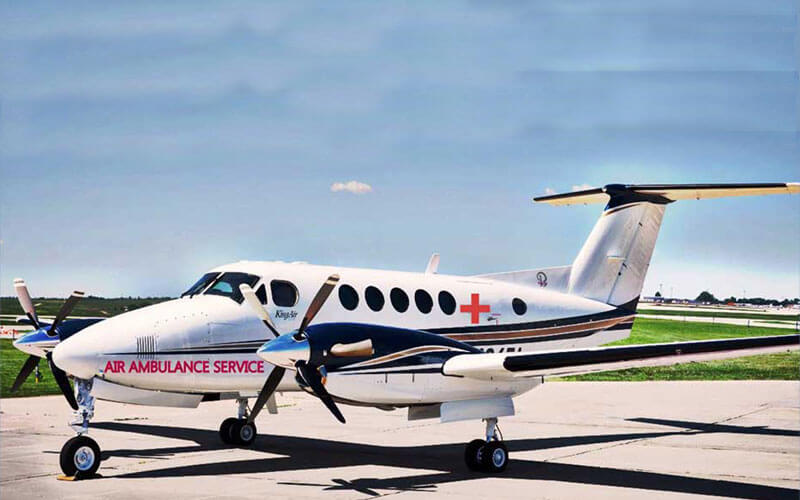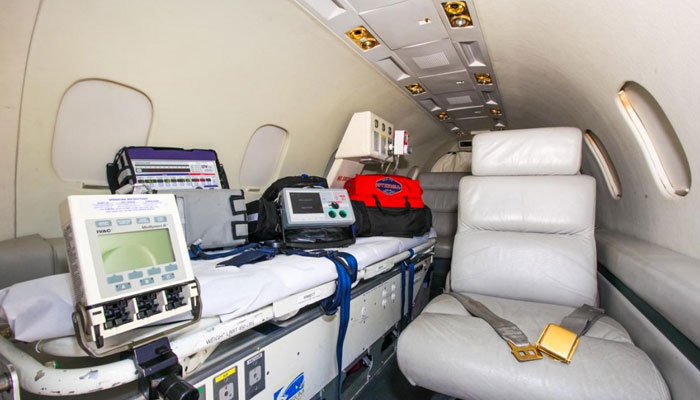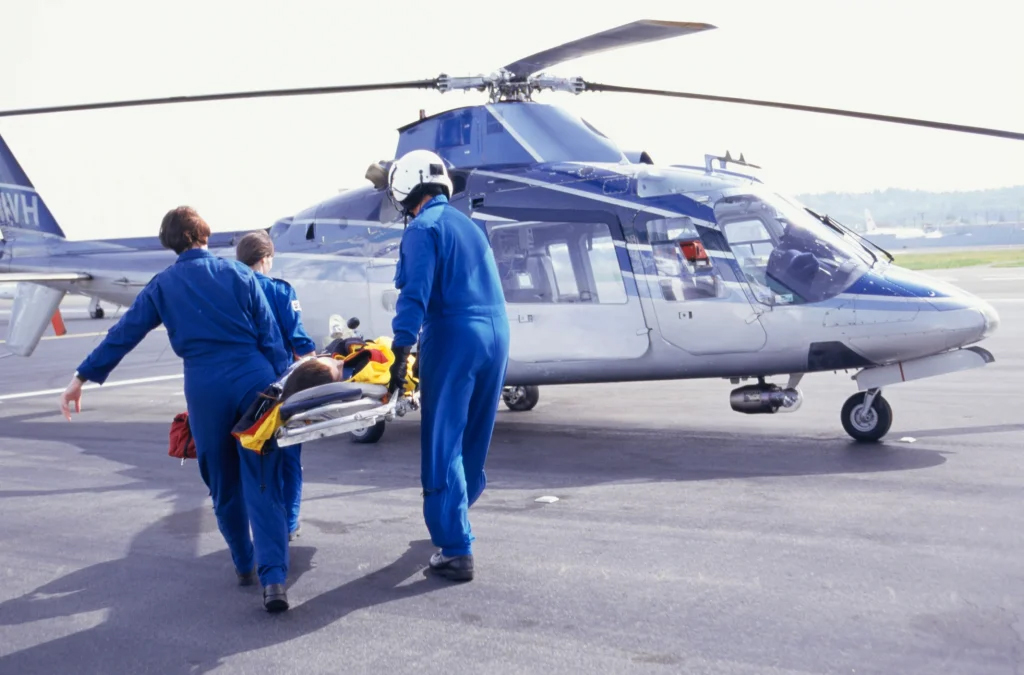Are you wondering what Air Ambulance is? How does Air Ambulance services work? How can you book to avail the services? So, here is your answer to all the questions that arise in your mind before booking an Air Ambulance service to avail it.
Firstly, The main question which comes in Patient’s head before hiring the services is:
What is an Air Ambulance?
Air services is a large terminology enwrapping the utilization of Air transportation such as airplane or helicopter. The aircraft assists patients to transfer to and from Medicare. Even they rescue people from the accident locations. Some organizations give out extensive perioperative and emergency and condemning care to all kinds of patients. During the aeromedical takeaway.
Air transport helped in providing medical evacuation during World War I. Though its part extended dramatically while Korea and Vietnam. Afterwards, Aircraft started to serve civilians. Mostly for the patient who needs medical services in an emergency.
However, Helicopters help patients to transfer to the specialist hospitals. They can bring the specialist for care to the location. Specifically for vital trauma instances. Moreover, flexing aircraft serve patients for long-distance conveyance.

What are the services offered by Air Ambulance?
Air ambulances utilizes air transportation like airplanes or helicopters to transfer patients to and from Medicare facilities and mishappening scenes. Air ambulances transfer patients to specialist care, they can even escort specialist care to the mishappening scene, specially for major trauma cases. They are generally utilized for international or long-distance transfer. Air medical services offer fast and swift transfer during emergencies. They can reach wide or hilly areas in moderate time, they are more approachable than land ambulances. This makes them very structured in meager populated rural regions.
What is the Charge for availing Air Ambulance Services?
Factors such as the cost of hiring an aircraft, incidental bed-to-bed transfer charges and cost of deployment of medical crew members took the average cost of an air ambulance in the range from Rs75,000 to Rs3 lakh per hour. A transfer from Dehradun or Chandigarh would cost approximately Rs3 lakh, while a transfer from any other city within 500km of Delhi would cost somewhere within Rs5 lakh.

How do you carry a patient on an Air Ambulance?
There are numerous parameters which a patient needs to check while booking an Air Ambulance. There are numerous things that fall under this like:
Medical Clearance
The ensuing instructions which medical clearance and fitness to transfer follows. Firstly, complete all the details or information asked by the association through MEDIF (Medical Information Form) while booking. Numerous people with prevailing medical conditions can travel on a commercial aircraft without any turbulence. However, on flight the cabin air is pressurized and precautions are sometimes required if you have a respiratory or heart problem.
Medical clearance is needed if
- Fitness to travel is in doubt as an outcome of recent illness, hospitalization, injury or surgery
- You have subsist unstable medical condition
- Special services such as oxygen or the utilization of medical equipment on board is required
- You are traveling for medical reasons or treatment
It is endorsed that as a patient you need to examine any vaccination necessary at least six weeks prior to your departure and carry appropriate travel insurance to cover any medical costs spent abroad. Mainly medical cases are straightforward, but others need individual assessment. However, In some cases, you may be questioned to travel with a medical attendant or with extra oxygen. Your fitness to travel is based on internationally accepted criteria, the objective being to make sure that you have a secure, pleasant and tedious journey.
Medical Clearance Unit
If you suffer from any condition that can cause trouble while you travel through Air transport, try to contact the nearest Air India office in person or through your travel agent, for succour in attaining the needed medical clearance. Medical clearance is only contemplated upon taking the medical information (MEDIF) forms.

Cabin Pressure
The cabin air pressure can affect a patient’s health as it can cause a drop of oxygen-level in the blood. This is not an issue for numerous people, but a patient who suffers respiratory problems (such as chronic bronchitis, emphysema or Chronic Obstructive Pulmonary Disease (COPD)) requires to book supplementary oxygen. A request for the similar requirements to be made at the time of booking of flights. Post operative care Flying after an operation or a serious illness can be fraughtting. it is shrewd to not to fly if you don’t feel alright.

Post Operative Care
Traveling after an operation or a serious illness can be difficult. Avoiding travelling while you don’t feel right seems a smart decision.
Transferring with medicines or medical equipment
- It is wise to sustain the medication you may require while traveling through the flight in your hand baggage with the prescription. Medication cannot be stored at a cool temperature on board. If medicines are required to be kept at a cool temperature, a cool bag or vacuum flask may be appropriate. Obligingly talk about choices with your pharmacist
- If traveling with medical equipment kindly enlighten Air India in advance, as clearance will hang on the kind of equipment
- Medical clearance is essential to utilize numerous medical equipment including nebulizers (used in some cases of asthma) and ventilators
- Equipment must be competent of being run by usage of battery as it is not possible to assure a power supply on-board our aircraft
- In standard conditions, medical equipment which has been authorized can be sanctioned on board except during taxi, take off, approach and landing
Nebulizers
A nebulizer which can be operated through usage of a battery. It is used in-flight with the exception of during takeoff and landing.
On Board Seating
Safety regulations set forth that passengers with additional requirements should not be seated at emergency exits or in cross passages that form part of emergency exit routes. Seats most suitable to the passenger’s requirements will be allocated.


